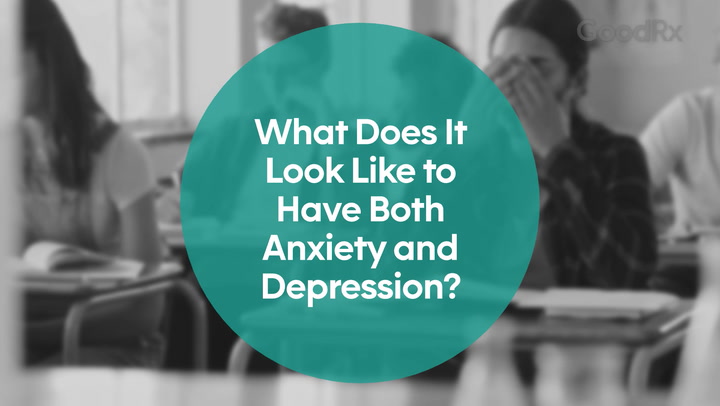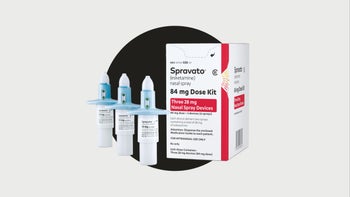
Can You Be Addicted to Self-Harm?
Key takeaways:
Self-injury — the act of intentionally causing physical harm to your body — isn’t technically an addiction. But self-harm does have several addictive qualities.
Self-harm and substance use can both be used to manage extreme distress or regulate intense emotions. The instant relief people feel after self-harm contributes to its addictive nature.
If you self-injure, seek help from a mental health professional. There are several evidence-based treatments that can help you learn new ways to manage distress and stop self-harming for good.

Self-harm is the name for any intentional behavior that results in injury to your body. It is a way for people to deal with distress when they don’t know what else to do, which is also a common reason for using substances.
Self-injury can be addictive for many people. We’ll take a closer look at the link between self-harm and addiction. But first, please note that self-injury is a potentially triggering topic. You may want to read with a trusted support person or mental health professional to maintain your safety and well-being.
Can self-harm be addictive?
A growing body of evidence seems to confirm that self-harm can be addictive. Self-harm does not involve using alcohol or other drugs. But it can make you think, feel, and act like you can’t manage without it. You may also increase the frequency and intensity of injury in an addictive pattern.
Search and compare options
To explore the connection between self-injury and addiction, researchers developed an assessment that used information about substance use and applied it to self-harm. One study found that almost 98% of participants who self-harmed experienced three or more addictive aspects. The behavior seems to lead to powerful cravings, periods of relapse, and recovery, just like other addictions.
Self-harm can be classified as a behavioral addiction. People who have behavioral addictions — like gambling or compulsive buying — may:
Become overly focused on the behavior
See the behavior as a solution to a problem
Continue performing the behavior, even though it causes distress
Feel a sense of tension building before the behavior
Note a sense of relief during or after the behavior
One reason self-harm may be addictive in nature is brain chemistry. Experts believe that the brain’s dopamine and opioid systems are involved during self-harm. Dopamine is a brain chemical associated with feeling rewarded and learning. When the opioid system is activated, you may feel less stress and pain.
Self-harm may provide fast relief from intense emotions due to these chemical changes in the brain. But self-harm may then lead to feeling shame and guilt. This cycle can reinforce the desire to self-injure and maintain the addiction.
Why do people self-harm?
People who hurt themselves often struggle to control intense feelings. Or they may self-harm because they don’t feel anything, and self-harm helps them stop feeling numb or dissociated. But the motivation to self-harm is not the same for everyone. Two people that harm could do so in very different ways for very different reasons.
Read more like this
Explore these related articles, suggested for readers like you.
Some of the most common reasons people self harm are to:
Reduce uncomfortable emotions, like anger, sadness, and loneliness
Increase any feeling at all, especially when they feel numb or empty
Punish themselves
Express anger at other people
Feel like they can control something
Show others that they are in distress and need support
Some experts believe that people with fewer emotional regulation skills may be more likely to self-harm. Until people are able to learn safer emotion regulation skills, self-injury feels like the only way to escape uncomfortable and unmanageable situations.
Is there self-harm recovery and relapse?
Yes, there is a pattern of recovery and relapse with self-harm. This means you may stop self-injuring for months or years and then start again. While it may not feel good, relapse is a typical aspect of recovery. It is a good opportunity to reflect on your recovery and plan ways to extend your recovery in the future.
One reason self-harm is prone to recovery and relapse is that you “crave” the relief you get from self-injury. When someone stops self-injury, they might feel cravings to repeat the behavior.
A small research study suggests that people most often crave self-harm when they experience intense negative emotions. This is different from craving substances, which can happen for a number of reasons.
When paired with increased stress, these urges can result in relapses as the person begins to self-harm again.
To prevent a self-harm relapse, try to:
Identify feelings associated with self-harm urges and know that they will pass.
Focus on not self-harming for short periods of time (just hours or days) because short-term goals can feel more manageable.
Devote energy to new, healthy behaviors.
Turn to your loved ones for assistance and support.
Try distraction and other positive coping skills.
Call a helpline.
Seeking help for self-injurious behavior
If you struggle with self-harm, seek help from a mental health professional. They can help you understand what triggers your self-harm urges and help you learn new ways to cope with intense emotions.
A mental health professional can also determine if you have an underlying mental health condition. Many people who self-harm have conditions such as:
Anxiety disorders
Borderline personality disorder (BPD)
Major depression
If you do have a mental health condition, your providers will work with you to treat those symptoms. This can include a combination of therapy and medications if needed. In most cases, therapy is especially helpful.
Currently, there are several research-backed therapies for self-harm:
Dialectical behavior therapy (DBT): A type of therapy that helps you learn new skills to manage intense emotions, build your interpersonal skills, and learn mindfulness
Emotion regulation group therapy (ERGT): A 14-week group therapy approach to help you accept your emotions and manage behaviors
Treatment for self-injurious behaviors (T-SIB): A 9-session, weekly treatment that uses individual therapy to boost motivation, increase distress tolerance, and limit thinking that leads to self-harm
Ending self-injury is challenging. But treatment can be effective in breaking the cycle of self-harm and avoiding future relapse.
The bottom line
Just like substance use, self-harm can offer people instant relief when they’re extremely distressed or struggling to manage intense emotions. Though not technically considered an addiction, self-harm can become addictive for many people. This may be due to a connection with the reward center in the brain or self-harm’s similarity to behavioral addictions.
If you self-harm, know that recovery is possible. Get support from a trained mental health provider who can help you learn new ways to manage distress and get on the path to a safer, healthier future.
Why trust our experts?



References
Blasco-Fontecilla, H., et al. (2016). The addictive model of self-harming (non-suicidal and suicidal) behavior. Frontiers in Psychiatry.
Cipriano, A., et al. (2017). Nonsuicidal self-injury: A systematic review. Frontiers in Psychology.
Cornell University College of Human Ecology. (n.d.). Is self-injury addictive?
Ernhout, C., et al. (2015). What’s the relationship? Non-suicidal self-injury and eating disorders. Cornell Research Program on Self-Injury and Recovery.
Grant, J. E., et al. (2011). Introduction to behavioral addictions. American Journal of Drug and Alcohol Abuse.
Himelein-Wachowiak, M., et al. (2022). Getting ‘clean’ from nonsuicidal self-injury: Experiences of addiction on the subreddit r/selfharm. Journal of Behavioral Addictions.
International Society for the Study of Self-Injury. (n.d.) Treatments for NSSI.
International Society for the Study of Self-Injury. (n.d.) Why do people self-injure?
Kilburn, E., et al. (2009). Distraction techniques and alternative coping strategies. Cornell Research Program on Self-Injury and Recovery.
Klonsky, E. D., et al. (2014). Nonsuicidal self-injury: What we know, and what we need to know. Canadian Journal of Psychiatry.
Pambianchi, H., et al. (2019). Understanding the neurobiology of non-suicidal self-injury. Cornell Research Program on Self-Injury and Recovery.
Pietrusza, C., et al. (2010). Recovering from self-injury. Cornell Research Program on Self-Injurious Behavior in Adolescents and Young Adults.
Sweet, M., et al. (2010). Therapy: What to expect. The Cornell Research Program on Self-Injury and Recovery.
Victor, S. E., et al. (2012). Is non-suicidal self-injury an ‘addiction’? A comparison of craving in substance use and non-suicidal self-injury. Psychiatry Research.
Weintraub, M. J., et al. (2017). Self-harm, affective traits, and psychosocial functioning in adults with depressive and bipolar disorders. The Journal of Nervous and Mental Disease.
Zagorski, N. (2022). People who self-injure describe behaviors as addictive. Psychiatric News.
For additional resources or to connect with mental health services in your area, call SAMHSA’s National Helpline at 1-800-662-4357. For immediate assistance, call the National Suicide Prevention Lifeline at 988, or text HOME to 741-741 to reach the Crisis Text Line.


























